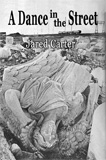Review by David Lee Garrison
Wind Publications
600 Overbrook Drive
Nicholasville, KY 40356
ISBN: 978-1-936138-27-2
2012, 100 pp., $15.00
www.windpub.com
One of the greatest gifts of Jared Carter’s poetry is his vision of everyday things, as in this last poem of his fifth book:
Snow
At every hand there are moments we
cannot quite grasp or understand. Freeto decide, to interpret, we watch rain
streaking down the window, the drainemptying, leaves blown by a cold wind.
At least we sense a continuity insuch falling away. But not with snow.
It is forgetfulness, what does not know,has nothing to remember in the first place.
Its purpose is to cover, to leave no trace…
The poem tells us about something we thought we knew, something right in front of us, something so common that we do not really see it. In these elegiac couplets, the poet reminds us of our modest place in the universe, reminds us that in the long run we, too, will leave no trace.
If snow has no memory, this poet certainly does. He remembers what we have forgotten and need to remember. In the opening poem, “Prophet Township,” the speaker comes upon an abandoned farm where people
…had no choice
but to pack up and leave—head back
to town, try to get a stake together,
go somewhere else. They brought along
what they could carry. Everything else
was left behind: piles of old clothes,
root cellar full of empty Mason Jars,
strings of peppers tied to the rafters.
These things that people leave behind tell us what their lives were like. Carter finds the things and writes about the people in a way that grants dignity to their hardships. This subtle awareness of past lives is a common thread in his poetry, and “Prophet Township” is a good example of it. It is reminiscent of Carter’s most anthologized poem, “The Purpose of Poetry,” a narrative about a man forced to leave his land when the government decides to flood it for a reservoir.
A Dance in the Street tells us, among other things, about people on the edges of society—homeless wanderers who on a cold night build a fire in a drum to keep themselves warm, a man who returns to his home in order to speak with his father who has been dead for fifteen years, people who are blown about like the plastic sack in the last poem of that section. Carter describes the sack as this “product of modern technology, made / by the billions” that comes “to the end of its journey, / almost aware that something is missing, / managing to rise up for one last look.” The sacks become a metaphor for people, and Carter’s poetry is like that one last look back at where those people have been, where we have all been in one way or another.
The title of the book comes from William Blake: “What is the price of Experience? do men buy it for a song? / Or wisdom for a dance in the street?” The lines suggest a link between music and experience that appears and reappears in the form and content of the book and throughout the poetry of Jared Carter. “Cicadas in the Rain,” for example, is a lyrical poem organized in four-line stanzas of unrhymed iambic lines. It is about
That sound so familiar, so unhesitant, but never
during a storm, and yet with drops plashing
and pelting through the leaves, their voices
coalesced in ways I had never heard before—some strange harmonic of summer’s ending.
The music of cicadas and falling rain come together here, joined by the speaker’s experience of them and beautifully expressed in the poet’s quiet music.
The book includes many poetic forms—a found poem that is a series of captions from an art museum, a sonnet about roadside crosses commemorating traffic deaths, a number of poems organized in couplets or three-line stanzas, and a few in blank verse. While the majority of the work is in free verse, Carter’s lines are always carefully cadenced. “Miss Hester,” for example, about a woman who played background piano music for silent movies, has the fourteen lines of a sonnet but no end rhyme, and each line has four iambic beats. The poem has a rhythm that is similar to that of a sonnet but not as obvious. Like the music for the background of the movie, the measured rhythm provides the background, so to speak, for the poem.
While many of the poems are scenes from the Midwestern past, several in the fourth of the book’s six sections go back to classical themes. In a meditation on the “Sphinx,” for example, Carter recalls Oedipus:
Of all myths,
all tales, it is the most ancient and remote,
the most elemental. Each time it appears,
like some presence that casts no shadow,
it is the wayfarer whose life has changed,
not the Sphinx, which is outside history,
and uncaring, like the oldest of sibyls.
Jared Carter’s poetry is like the Sphinx in that when we meet it, we are changed. We may be no better or worse, we may not have found the answers to any of life’s riddles, but we are different people because we have seen the world in a new way.
His poetry has a simple profundity like that we find in Emily Dickinson. You will hear the fly buzz in this book and be more alive than you were before you read it.
What Ted Kooser wrote about Carter’s After the Rain also applies to A Dance in the Street–it is “a moving and magical book, charming in the best sense of that word….Jared Carter is the real thing.”
Comments are closed.